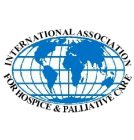Regional Reports by IAHPC Board Members
News from the United States
The hospice and palliative care movement continues to grow in this country. The number of patients accessing hospice has reached an all time record. In addition, the number of palliative care programs in acute care facilities continues to increase. Palliative medicine has been recognized as a subspecialty within seven major medical specialties. There are now accredited fellowship training programs in most American cities. Following a 1-year training fellowship and the passing of an exam, physicians receive a subspecialty certificate in palliative medicine. There are similar efforts already in place for a palliative care specialty in nursing.
There are still a number of major challenges for the hospice and palliative care movement in the United States.
The structures, processes, and outcomes of different palliative care clinical programs have not been appropriately established. Some palliative care programs consist of one or two part time nurses while other programs have a complete full time interdisciplinary team of palliative medicine specialists and other healthcare professionals. Some programs have fully established acute inpatient palliative care units for the management of severe physical and psychosocial distress while other programs simply provide consultation services. A very small number of programs have outpatient clinics. At the present time there is lack of consensus as to what constitutes an effective acute care palliative care program.
There has been limited progress in establishing administrative structures. Most palliative care physicians work in affiliation with their primary specialty group [i.e. those who are internists work under a department of internal medicine, those who are geriatricians under the department of geriatrics, etc.]. This lack of administrative structures creates instability in the positions since the benchmarks used for the assessment of clinical performance are usually ineffective to evaluate the performance of an anesthesiologist or an oncologist whose primary job is to do palliative care. Until appropriate administrative structures exist in hospitals and cancer centers the growth and stability of palliative care programs will remain irregular.
There is generally very limited access to undergraduate and post graduate medical and nursing education. This is partially due to the very limited number of palliative care specialists who are on faculty in both schools of medicine and nursing. In addition, there is limited recognition of the considerable body of knowledge that accompanies palliative care. This lack of adequate education of the future generation is concerning because it will impact patient care and the interest of healthcare professionals in acquiring this training in the future.
Research has also not been progressing at an ideal speed. This is not likely to change in the near future since the overall budget for research in the nation has substantially decreased. New academic groups are starting to develop in some universities and cancer centers and hopefully this will bring significant results in the next decade.
Overall, hospice and palliative care in the United States continue to grow as a movement and more and more patients and their families are taking advantage of these programs. There are growing pains to improve the quality of care and to establish the academic components that will make this movement stable into the future. However, there are many reasons for us to feel very optimistic about the future.
Respectfully submitted,
Eduardo Bruera, MD
IAHPC Board Member and Past Chair
Professor and Head of the Department Palliative Care and Rehabilitation Medicine, MD Anderson Cancer Center
News from Scotland
Readers of our IAHPC newsletter might be interested in a historic document produced recently by our Scottish Government. Its title is " Living and Dying Well : a national action plan for palliative and end of life care in Scotland "
It can be viewed at URL:
http://www.scotland.gov.uk/Publications/2008/10/01091608/0
As many readers will know we are a small country with just over 5 million inhabitants. We have had hospices and palliative care services in the community and in hospitals since 1977, the subject is taught in all medical school and nursing colleges since the early 1980s. In recent years, hospice and palliative care have gained nationwide acceptance and become increasingly important in the views of our politicians. This document reflects that and is also a reflection of the influence on government thinking of a national hospice and palliative care body which brings together all the providers - The Scottish Partnership for Palliative Care (SPPC)
This might interest readers who also live, work and die in similar countries.
Dr. Derek Doyle
IAHPC Board Member and Past Chair
Hon. President of the Scottish Partnership for Palliative Care
Scotland
Email this page to a friend!
Top of Page |

